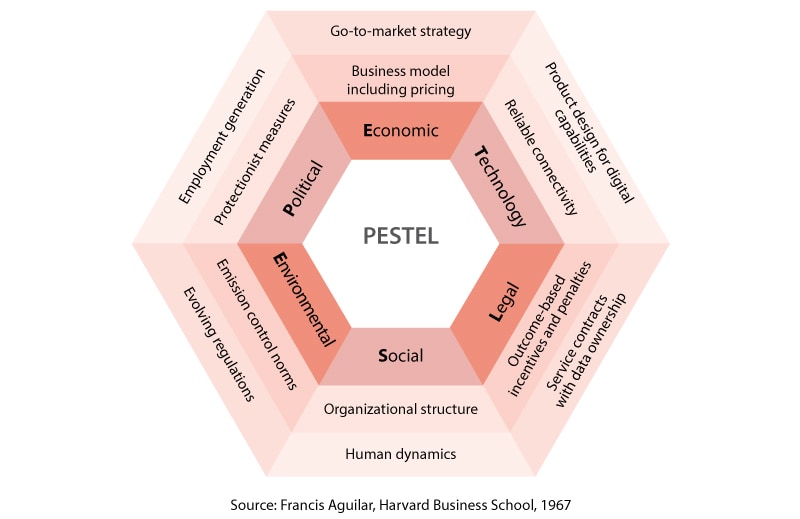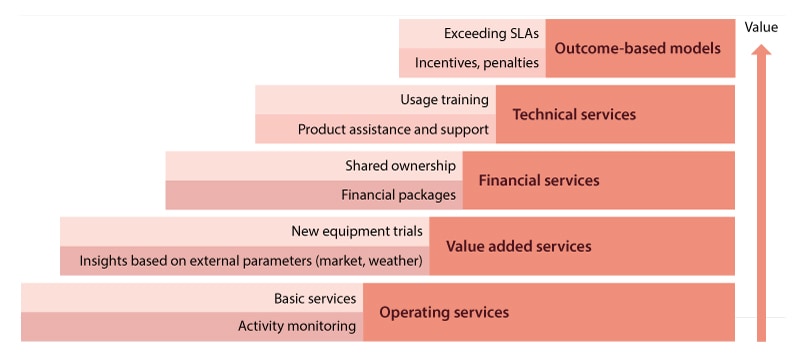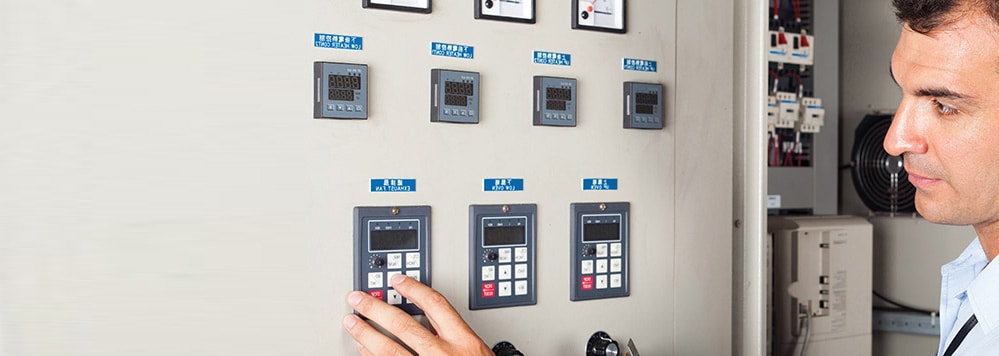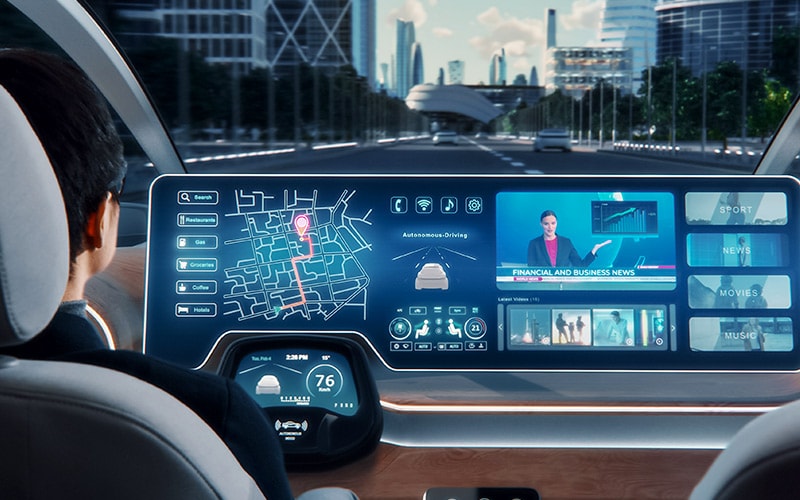Servitization, or the bundling of digital technologies with products to create new service offerings, has seen increasing levels of adoption, along with inherent challenges.
The more asset-intensive an industry is, the more complicated the products, operations, and services are - and the greater the need for initial investment and the ongoing costs for end users. This pushes the need for a servitization-based model where the customer pays the original equipment manufacturer according to product usage.
Aviation is an early mover, with a revenue share from services above 50 percent levels for engine OEMs. Automotive follows aviation, with close to 40 percent, according to recent studies on services in global manufacturing. Industrial equipment and medical and life sciences equipment follow at 20 percent levels of revenue share from services and growing. As far as growth is concerned, close to 70 percent of manufacturing executives globally reported some form of servitization.1
With the adoption expected to trend upward, what roadblocks should the industry be aware of? What can organizations do to ensure that growth is not restrained? This report includes an all-around perspective of potential roadblocks and offers suggestions to counter them.
Servitization: what can go wrong?
A study of the challenges faced by servitization, based on a systematic literature review2 of 48 journal articles published between 1998 and 2016, highlights five broad areas where these challenges occur:
- Organizational structure
- Business model
- Development process
- Customer management
- Risk management
This report uses the classic PESTEL model, ensuring that these five areas are covered. Figure 1 below includes a PESTEL look at the challenges in servitization: political, economic, social, technology, environmental, and legal.
Fig 1. Servitization challenges - a 360-degree perspective

Economic challenges: seek a profitable, sustainable business model
Industries looking to capitalize on servitization need to thoroughly know the targeted market segment and individual customer needs. For example, a leading garden equipment maker offers ‘gardening equipment as a service.’ The company has several offerings, from basic operations with a service contract and warranty to outcome based engagements. It also offers value added services (such as insights based on weather patterns), financing options, and technical services for training and operation.
Figure 2 shows the service levels for the garden equipment example. Beyond the basic warrant and services, the manufacturer also offers advanced technology such as sensors for plant growth monitoring, GPS-based mapping of large garden coordinates, big data for predictive machine health, and a mobile app for alerts.
Market size will shape the solution offered and its attractiveness. Uniform service plans will not work for fragmented markets. Individual consumers who want backyard maintenance will have different needs than corporate users. Distinct price schedules can be determined according to the perceived customer value, the cost to serve, and the risks involved. As markets mature, outcome based models will evolve and become the norm, pushing for service quality beyond basic needs.
Fig 2. Service offerings

Technology challenges: leverage digital capabilities
The photocopying industry was an early adopter of servitization-based business models. In the 1960s, Xerox offered its copiers on lease for a monthly fee that covered service and support, a minimum number of copies, and an extra charge for each additional copy. The industry has now developed into managed print services that cover end-to-end document management. In 2017, Xerox reported 25 percent of revenue share from equipment, with the remaining share from what is known as post-sale revenue; this includes document services, equipment maintenance, consumables, and financing.
The Internet of Things (IoT) is commonly used for connectivity, to remotely monitor equipment in the field for usage and performance. However, connectivity challenges to track product usage often lead to revenue leakage or payment delay in the pay-per-use model; service engineers need to physically visit the customer location to track product usage. Product design in the servitization era needs to include secure, even foolproof features such as close-range communication to convey usage details, independent of customer-provided infrastructure.
Legal challenges: leverage information asymmetry
Collection of product performance data using closed-loop IoT technology is only one side of the story. Enterprises should analyze the raw data from equipment operations to identify insights and take appropriate actions. While potentially lucrative, there are legal challenges over who owns the data generated from equipment in operation, or even who has rights to access that data.
If a customer purchases the equipment, they may feel they have ownership. This is especially important when some of the data is environmental in nature, like soil data for a farmer or foot traffic for a retail store operator. Even if the OEM writes into their service agreement, data access and ownership rights can derail a servitization initiative. In a world of high-profile data breaches, it is the OEM’s responsibility to prove their value proposition and to expect initial wariness from their customers.
Mindful of this challenge, OEMs should move forward with scenarios that are attractive to their customers. Even as OEMs attempt to use the asymmetry between their product performance knowledge and end users who do not have these insights, OEMs cannot overplay their hand. Enlightened companies make use of this asymmetry to draft economically attractive, legally binding, but mutually beneficial agreements. This should be made attractive to customers, so they clearly see potential benefits realization from efficient equipment operation and additional value-added services.
Power generation systems leader General Electric (GE) is an example of using information asymmetry effectively, particularly in its turbine operations. GE has leveraged Predix, its proprietary industrial IoT platform, to capture and analyze IoT data to improve customer operations. Predix is a prominent example of how connectivity is critical to servitization and digital transformation. In the 2017 GE Digital Industrial Evolution Index report, 63 percent of participants said connectivity was a primary technology required for digital transformation. Industrial IoT applications were the next-ranking requirement for 58 percent of leaders.
Social challenges: cultural and organizational dynamics
Organizations accustomed to a product-centered mindset need to transform their culture to successfully embrace servitization. Servitization requires system thinking, beyond a discrete product perspective. OEM accountability does not end with the product sale but continues throughout the life cycle of those products, bound by a contract for pre defined performance measures that carry incentives and penalties. OEMs need to rethink their organizational structures to move from functions to product line based teams, each serving as an independent business unit.
Appliance maker Haier has completed several transformation programs in its digital journey. CEO Zhang Ruimin introduced Haier’s transformation as a change in perspective, asking employees to consider the company not just as a maker of products, but a solution provider for customers’ problems. In the late 1990s, Haier restructured itself from siloed functional units to market chains, giving every employee the ability to connect to the market. In the mid-2000s, Haier reorganized itself into what Gary Hamel3 calls micro enterprises - 4,000 of them, each with ten to fifteen employees and autonomous operations.
Haier’s approach to the internet era was to organize the micro-enterprises into groups called platforms that are open to collaboration, not only with customers but also with other entities such as academic institutions or even competitors. When Haier faced challenges during these transformation phases, specifically with internal contracting, the company overcame through the introduction of an incentive system that linked compensation to marketplace results.
Environmental challenges: keep it green
In 2015, 196 countries signed the Paris Agreement, committing to time-bound measures to reduce greenhouse gas emissions and eventually pollution levels. Each country has developed its own target. For example, the European Union target is to reach 30 percent of energy generation from renewable sources by the year 2030. Several countries also announced their plans to stop the use of internal combustion (IC) engines in cars.
As the challenges to meet these targets evolve, policymakers, regulatory bodies, and governments will look at ways to reduce carbon and energy footprints, and related sustainability metrics.
Servitization extends the life of existing assets and takes a life cycle approach, making it easier to measure and make progress in achieving sustainability targets.
As servitization is seen as a practical path forward, regulatory bodies will incentivize and accelerate it, by whatever means necessary. This will impact corporate strategy in power generation, industrial, and automotive industries. This has already occurred in other areas. As an example, the price of solar power has fallen drastically due to heavy government subsidies. In some developing countries, delayed plans to eliminate internal combustion engines have led to stringent fuel emission standards for which OEMs were not prepared. Enterprises embarking on the servitization journey should keep such environment-based challenges in mind, with contingency plans to stay current with policies and regulations.
Political challenges: protectionist measures
The increase in automation has led to reduced employment elasticity - new jobs created for each percentage point of growth in the economy. This jobless growth in some countries has prompted governments to resort to protectionist measures to maintain employment levels. Such measures threaten the supply of parts for manufacturing and eventually services.
According to media reports, Toyota faced near stoppage of its assembly lines in the UK because of the looming Brexit situation; just-in-time manufacturing is dependent on the steady flow of parts from other countries in Europe. Airbus design teams, along with factories for making the complicated aircraft wings, are located only in the UK. A post-Brexit scenario may lead Airbus to relocate its wing-making facilities to continental Europe - along with spare parts and consumables for servicing.
Manufacturing companies need to consider political challenges that disrupt business operations and proactively mitigate risk for geographic dependencies. Automation and cost-effective, multimodal transportation are changing the priorities to determine factory locations. Appliance maker Dyson recently decided to set up an electric vehicle factory in Singapore due to the expertise availability and market proximity, not based on labor arbitrage.
Servitization in a connected world
Equipment connectivity is both a foundation and a driver for servitization. According to a Cisco forecast, there will be 30 billion IoT endpoints in manufacturing by 2020 and 500 billion across all industries by 2030. End users will increasingly demand servitization business models as the benefits are recognized and expected. OEMs should approach challenges from a holistic perspective, seeing them as logical steps in the journey to servitization becoming a core contributor to their business success.
References
- Guillot, Craig, “Servitization’ Is a Growing Manufacturing Model,” Chief Executive, Dec. 5, 2017.
- Zhang, Wanrong and Banerji, Sujit, “Challenges of servitization: A systematic literature review,” Elsevier Inc., 2017.
- Hamel, Gary and Zanini, Michele, “The End of Bureaucracy,” Harvard Business Review, Nov.-Dec. 2018.





